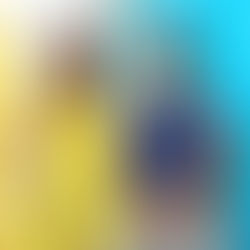The art of sleep clean up
Why do we accept insomnia?

I have always believed that sleep is one of the most basic needs to ensure human survival. Yet under the autonomic nervous system control, it is impossible for us to control when exactly we should fall asleep.
We can decide to sleep, but that does not mean that our minds will comply and switch off on demand.
My teenage patient the other day told me that the reason the sleeping tablets I gave him were
not working is because of his “chronic insomnia”. It still baffles me that people are accepting
of the fact that they do not sleep.
Insomnia Disorder is one of the Sleep Wake Disorders in the Diagnostic and Statistical
Manual for Psychiatric Disorders (DSM 5).
Together with other sleep disorders, Insomnia Disorder is diagnosed when it cannot be
attributed to another psychiatric or medial illness, environmental factors or the effects of
substances.
It is characterized by dissatisfaction with sleep quantity or quality with complaints of
difficulty initiating or maintaining sleep or early wakening. It may occur during the course of
another medical or mental disorder or may occur independently.
Every individual who has significant complaints of insomnia, especially if it impacts their
functioning, needs to be evaluated by a medical doctor.
In cases where an identifiable cause can be sought, then such a cause needs to be treated in
order to manage the insomnia. However, if the insomnia occurs independently then the direct
treatment of the insomnia must be undertaken.
Treatment includes non-pharmacological and pharmacological modalities. The most effective
non-pharmacological treatment method is known as sleep hygiene. This is basically cleaning
up of sleep, to get rid of the “bad habits” that make it difficult to initiate and maintain sleep.
Some of these habits seem innocent however can have a significant negative impact on one’s
sleep.
During sleep hygiene an individual is advised to perform day activities that will tire
them in the evening and not to do anything in the evening that will stimulate an awakened
state.
Applying sleep hygiene techniques plays a significant part in improving insomnia. Patients
have shown improvement without having used sleeping medications. Other non-pharmacological methods include psychotherapy, relaxation techniques and sleep restriction techniques.
Adequate sleep is essential for optimal functioning and to prevent development and/or
exacerbation of medical and psychiatric disorders. It is thus imperative to seek medical and psychological evaluation to determine the cause of insomnia; and to initiate management
when indicated.
The Sleep Hygiene Techniques include:
Relax in the evening, do whatever works for you to relax. Improve the sleep ambience by reducing the noise; remove phones, TVs and radios from the bedroom. Make the room comfortable and appropriate for sleep by keeping it cool, dark and quiet.
Establish a regular sleep schedule, pick a sleep time and stick to eat as much as possible.
Get adequate daytime exercise. Do not engage in exercise just before bedtime, this increases endorphins and energy levels.
Use the bedroom only when you feel sleepy.
Reserve the bed for sleep and sex only.
Air the bedroom prior to retiring.
Avoid coffee, tea and cigarettes for approximately two hours prior to retiring.
Have a warm bath.
Do not stay in bed for more than 20 minutes if you have not fallen asleep. Get out of
bed, sit elsewhere and read a book until you feel sleepy again. Return to bed only
then.
Get up at a fixed time in the morning.
DO NOT sleep during the day.







.jpeg)

ความคิดเห็น